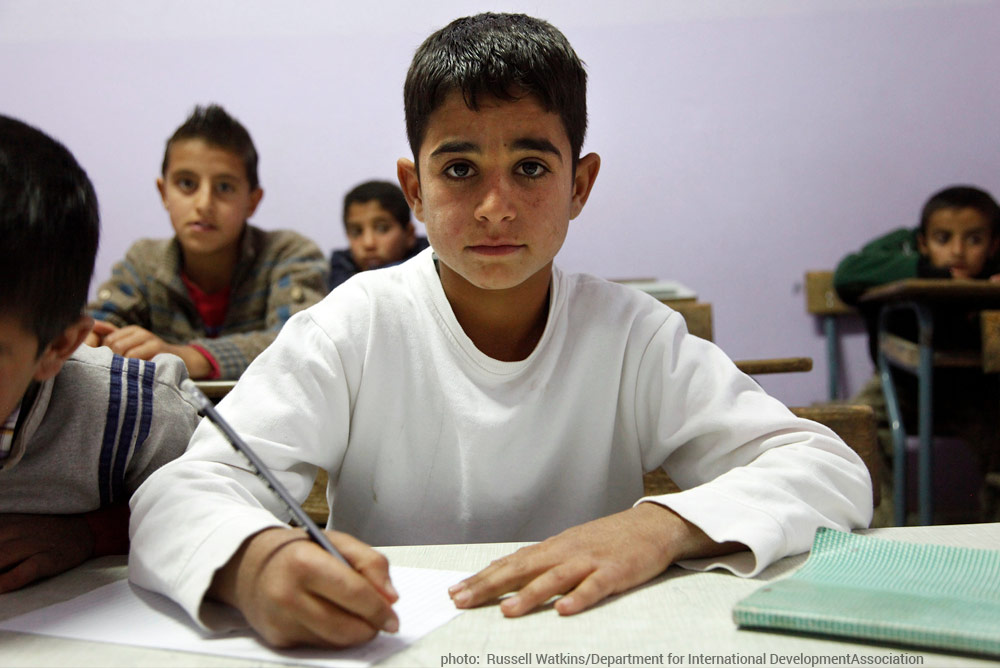New York City, April 19
Promises made to children are sacred. Gordon Brown, United Nations Special Envoy for Global Education, in a speech in the historic ECOSOC chamber at the UN, reminds us of the words of Nelson Mandela.
The theme of Brown’s speech is global cooperation. There is urgency in his voice. He tells us that if things continue as they are, by the 2030 deadline, we will fall short of the goal the world has agreed upon: quality education for all. At current trends, by 2030 there will be 200 million children around the world locked out of school. By the same year, 800 million of the world’s 1.6 billion children and young people will lack the basic skills that come with a high school education. We are on a path to leave half a generation behind.
I have witnessed first-hand what an education represents for a child who is deprived of so much. Years ago, I found myself in a classroom in Northern Ghana, and what I saw there was pure joy: young girls getting their first chance to be in a classroom, their faces so proud. I was reminded of it when Brown shared his own story of meeting a Syrian boy who is a refugee in Lebanon. When he asked the boy what he wanted to be when he grew up, he said: “I want to be an engineer. I want to go back to rebuild my country.”
Brown describes the current status of education as a promise broken the world over. And when we turn to the children in direst need – refugees, those living in poorest regions, and those with disabilities – we are doing the “least for those who need the most.” For instance, in South Sudan, 70 per cent of children aged 6–17 years have never set foot in a classroom. Less than 10 per cent of children in the country finish primary school.
Yet there is reason for optimism. Brown flags that we can get all children into school and learning, but only if everyone does their part. He calls it a Compact. The compact centers on a significant increase in investments in education. For starters, low- and middle-income countries, which house most of the world’s children—Uganda, Guatemala, Pakistan and Nigeria are examples—would need to further increase domestic public investment in education from an average of about 4% of GDP today to 5.8% of GDP by 2030, and put in place reforms to make sure children are learning. Several countries are already making inroads, and all of their efforts should be recognized.
Efforts by developing countries must be met by wealthier countries such as the United States, the UK and Germany, as they would need to increase financial aid for education, from about $16 billion per year to some $90 billion, as well as coordinate to ensure the most efficient use of funds. Here too, many donor countries are already investing important sums, but it’s simply not enough. And, even after all these proposed funding increases by countries and donors alike, there would still be a significant gap in education financing.
This is where the innovation comes in. To bridge the funding gap, Brown and the Education Commission that he chairs are calling for an International Finance Facility for Education (IFFEd). The Facility is a partnership between developing countries, international financial institutions such as the World Bank, and donor countries. Brought together through coordinated action, these entities are tasked with mobilizing new financial resources for education in countries that need support.
How would this Facility work?
First, it would pool donor funds to act as guarantees for the World Bank and regional development banks so they could borrow more money from capital markets and create a new stream of education financing. Second, it would mobilize funds from donors to subsidize or pay down interest on loans that countries in need would take out for education. Countries would then be able to pay loans back on favorable terms over several decades while reaping the economic benefits of a more educated, innovative and skilled population.
And there is a multiplier effect of sorts. For every $1 provided in guarantees and grant funds, the Facility could leverage between $2 and $3 into direct investment. In total, the Facility could mobilize an additional $13 billion annually for education by 2020.
It’s a numbers game, yet one that has direct consequences on children’s lives. In calling for this International Facility to be established, Brown urges us to take responsibility for what is happening to children, to those beyond our families, to those beyond our surrounding community. He knows from experience that when we cooperate globally, we all win.
If we get this Facility set up, we have a good shot at keeping our promise to children. So let’s get started.
Here is how you, the reader, can help. Tell the G20 countries to support the creation of the Facility.
Edith Asibey is a Senior Advisor to the Education Commission


So alarming situation around the world, it is will power for common man not money will change this. I have seen such children all around the world since I visit several countries frequently. Even my country India is facing this crisis since long as nobody has taken care, it is not government but common man’s job.
The third world countries need to put up good sysytems that can be supported and achieve real in real time,it will not be worthwile to invest in bad systems when they are not sustainerble or goal oriented as for the case of Kenya,our system of education has so much loopholes and this is so costly to all and slows down the rate to achieve an educated society.